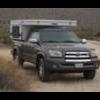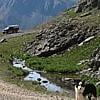Our dealer from Canada is down visiting right now.
He said most RVs in Europe use Butane for the stove, not propane.
So it must be ok to use indoors.
I think the information I got awhile back was wrong.
He has a newer VW Camper Van over there (maybe a 2004 pop-up model) and I think he said it has a butane stove in it.
Guess I learned something.
.
.





















